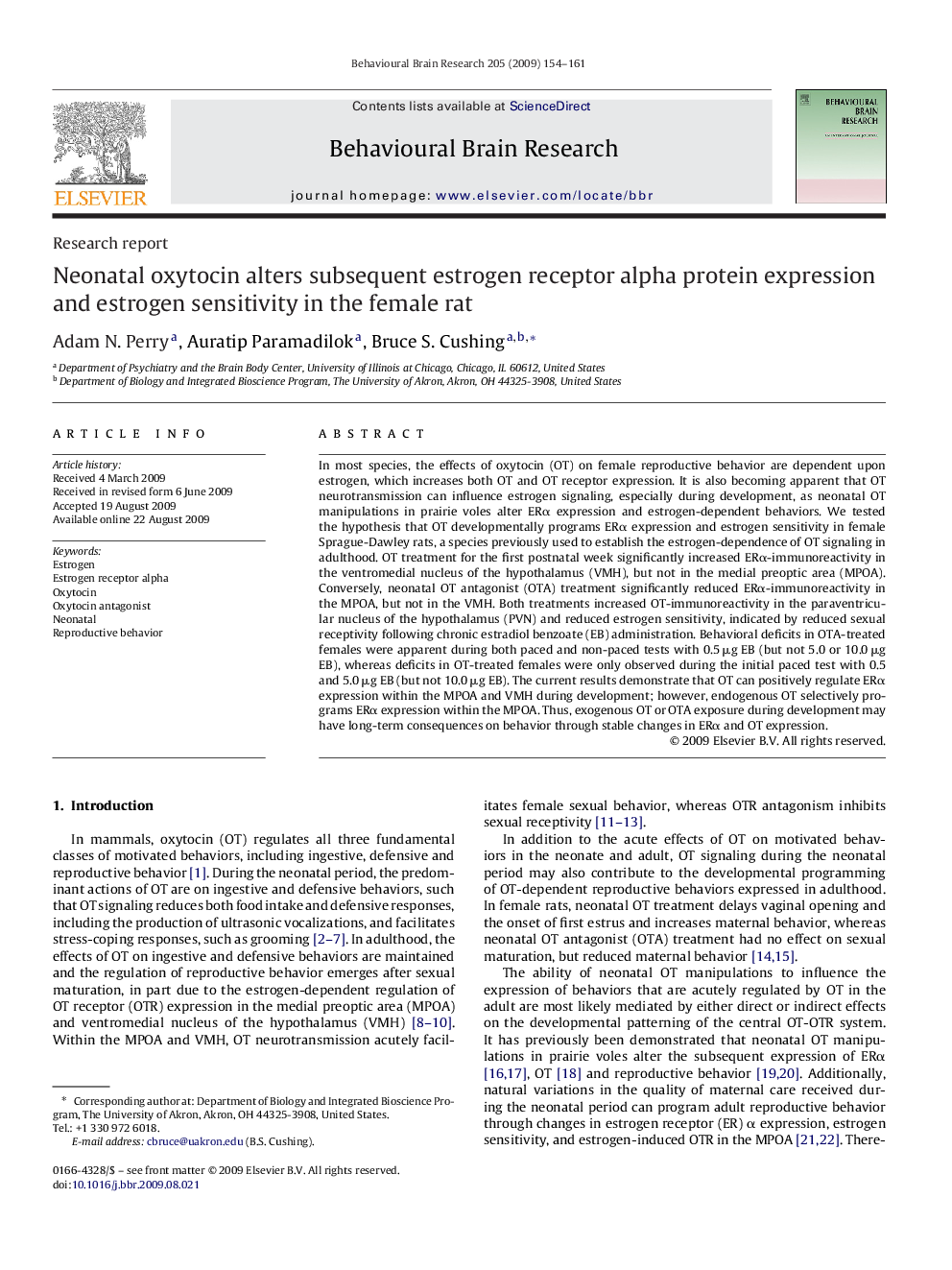| Article ID | Journal | Published Year | Pages | File Type |
|---|---|---|---|---|
| 4314521 | Behavioural Brain Research | 2009 | 8 Pages |
In most species, the effects of oxytocin (OT) on female reproductive behavior are dependent upon estrogen, which increases both OT and OT receptor expression. It is also becoming apparent that OT neurotransmission can influence estrogen signaling, especially during development, as neonatal OT manipulations in prairie voles alter ERα expression and estrogen-dependent behaviors. We tested the hypothesis that OT developmentally programs ERα expression and estrogen sensitivity in female Sprague-Dawley rats, a species previously used to establish the estrogen-dependence of OT signaling in adulthood. OT treatment for the first postnatal week significantly increased ERα-immunoreactivity in the ventromedial nucleus of the hypothalamus (VMH), but not in the medial preoptic area (MPOA). Conversely, neonatal OT antagonist (OTA) treatment significantly reduced ERα-immunoreactivity in the MPOA, but not in the VMH. Both treatments increased OT-immunoreactivity in the paraventricular nucleus of the hypothalamus (PVN) and reduced estrogen sensitivity, indicated by reduced sexual receptivity following chronic estradiol benzoate (EB) administration. Behavioral deficits in OTA-treated females were apparent during both paced and non-paced tests with 0.5 μg EB (but not 5.0 or 10.0 μg EB), whereas deficits in OT-treated females were only observed during the initial paced test with 0.5 and 5.0 μg EB (but not 10.0 μg EB). The current results demonstrate that OT can positively regulate ERα expression within the MPOA and VMH during development; however, endogenous OT selectively programs ERα expression within the MPOA. Thus, exogenous OT or OTA exposure during development may have long-term consequences on behavior through stable changes in ERα and OT expression.
